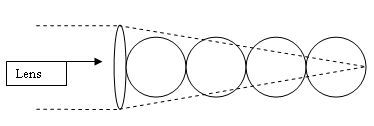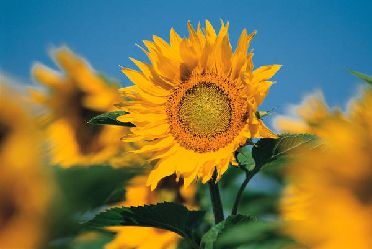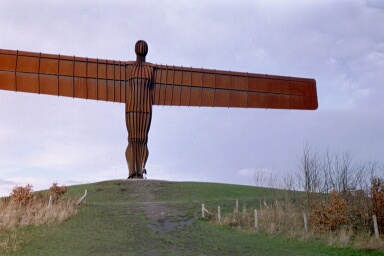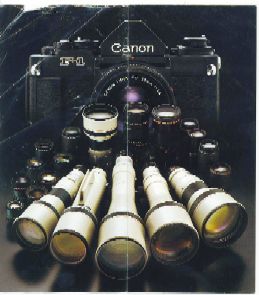
The aperture setting is the size of the hole in the front of the camera, no more, no less. Its setting affects two different things: the amount of light falling on the film and the 'depth of field' (explained below).

On a camera, the size of the aperture is defined as the ratio of the diameter of the opening to the focal length of the lens being used, in the diagram above, the aperture is 1/4 of the focal length of the lens (or f/4). To complicate things slightly, the amount of light let in is related to the area of the aperture, not the diameter. The area changes as the SQUARE of the diameter, instead of as a direct relationship. Therefore, halving the aperture to f/8 actually QUARTERS the amount of light entering the camera. Don't worry though, the camera manufacturer's have solved this sticky problem for you and worked out a series of 'f-stops' that result in a halving of light from one to the other. Hence the slightly strange progression of numbers found on the camera:
1.8, 2.8, 4, 5.6, 8, 11, 16
However strange they might look, all that matters is that each step to the right represents a halving of the amount of light reaching the film. Hence, if a picture is correctly exposed using a shutter speed of 1/125th of a second and an aperture of f/4, it will also be correctly exposed at 1/500th of a second and f/1.8.
Depth of field is a slightly tricky concept to come to terms with, but basically, it means the range from the camera over which objects are in sharp focus. A short depth of field (as in the first picture below) is ideal for picking out a subject from its surroundings, whereas a long depth of field (as in the second picture), is ideal for landscapes where the photographer wants as much to be in focus as possible.

(The above image is not the author's work and its copyright is held by a third party, used under the Microsoft clipart license)
Notice how both the foreground and background are out of focus, the flower in the centre is 'picked out' by its sharp focus. This sort of shot is achieved by using a WIDE aperture (like f/1.8).

In this shot of the angel of the north, there is a great depth of field as everything from the foreground to the distant background is in focus. Such a shot would use a NARROW aperture like f/16.
The reason for this relationship between aperture and depth of field is that, the wider the aperture, more rays of light with different focal points are let in to the camera, so the depth of field becomes narrower.
The focal length of a lens is the distance from the film that a simple lens would need to be, to be in focus. In modern lenses, this often has little to do with the actual length of the lens (just ask anyone who owns a 1200mm super telephoto lens!). The focal length is usually written on the lens, and in simple terms, the shorter the focal length, the wider the field of view. The standard 35mm SLR camera lens has a focal length of 50mm, this provides the standard field of view one expects in a camera. Wide angle lenses down to 7.5mm fisheyes can be obtained that pretty much photograph from one side of the photographer to the other! 70-300mm lenses are generally known as telephoto lenses that allow you to 'zoom' in on a particular part of your shot and fill the frame with a narrow field of view. Lenses with a focal length of over 300mm are generally known as super-telephoto lenses and allow you to get up-close and personal with your subject from a great distance (particularly useful for nature shots of easily startled creatures).

(The above picture was taken from the Canon FD lenses guide 1981, copyright Canon)
A good guide to what different lenses look like through the viewfinder can be found here.
A final word of caution:
If one isn't using a tripod, the shutter speed must be at least 1/the focal length of the lens in millimeters, to avoid camera shake.
In other words; if one is using a 300mm telephoto and photographing a stationary subject, the shutter speed will need to be at least 1/500th of a second in order to avoid 'camera shake' in the photograph. This will need to be doubled to 1/1000th if the subject is moving! Therefore, when using long focal lengths, a tripod is a very good investment.